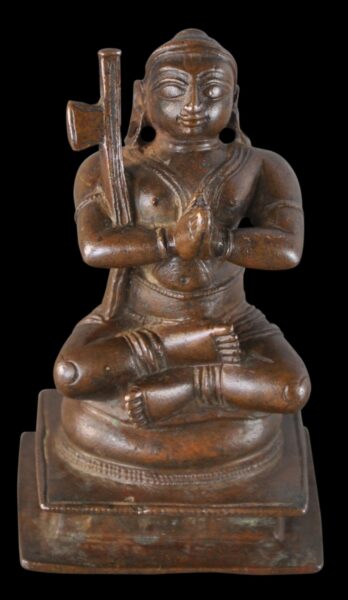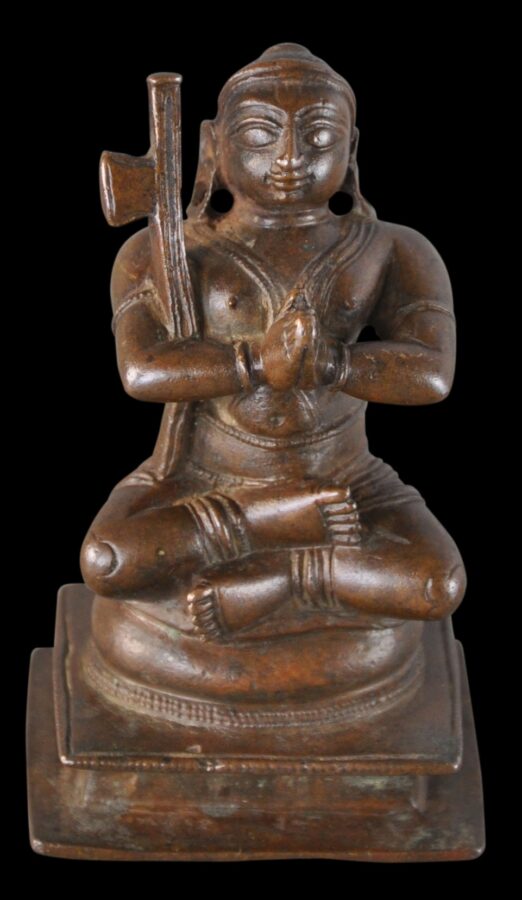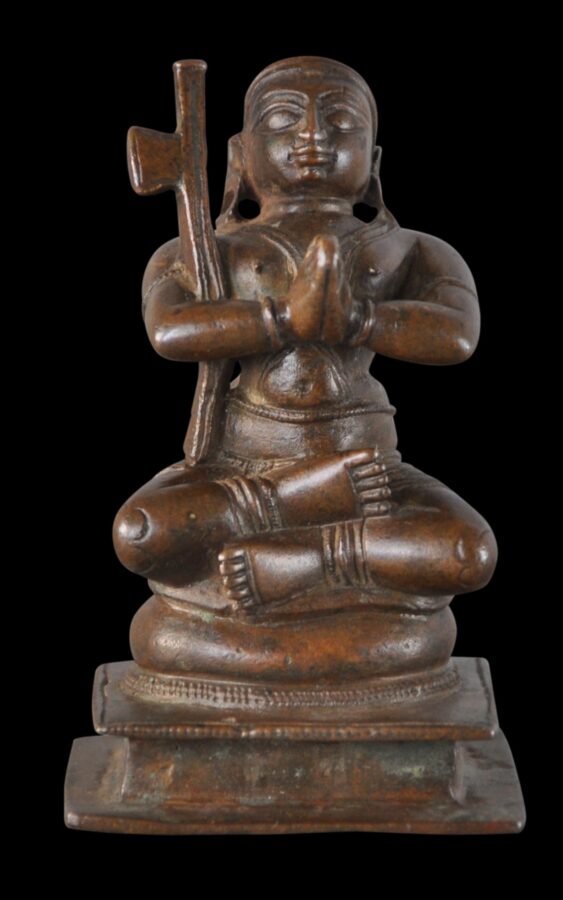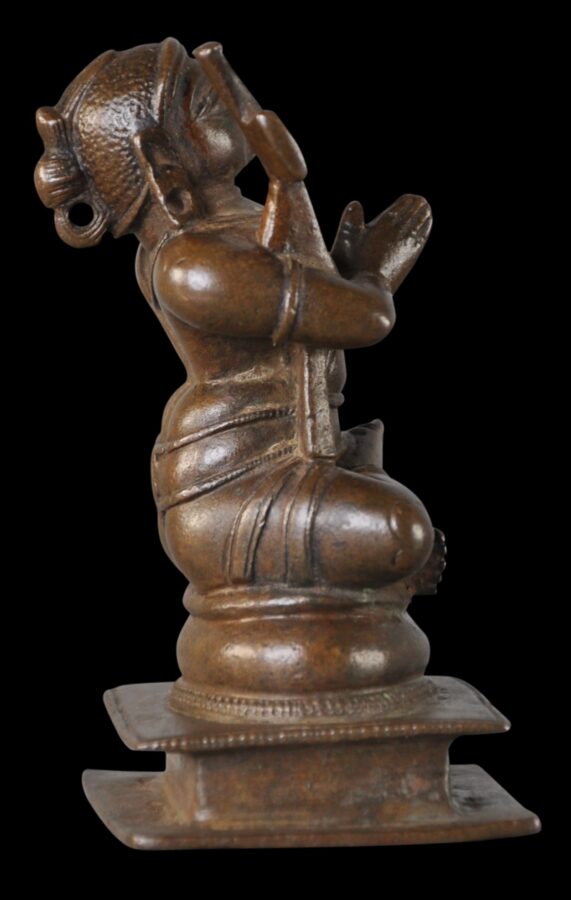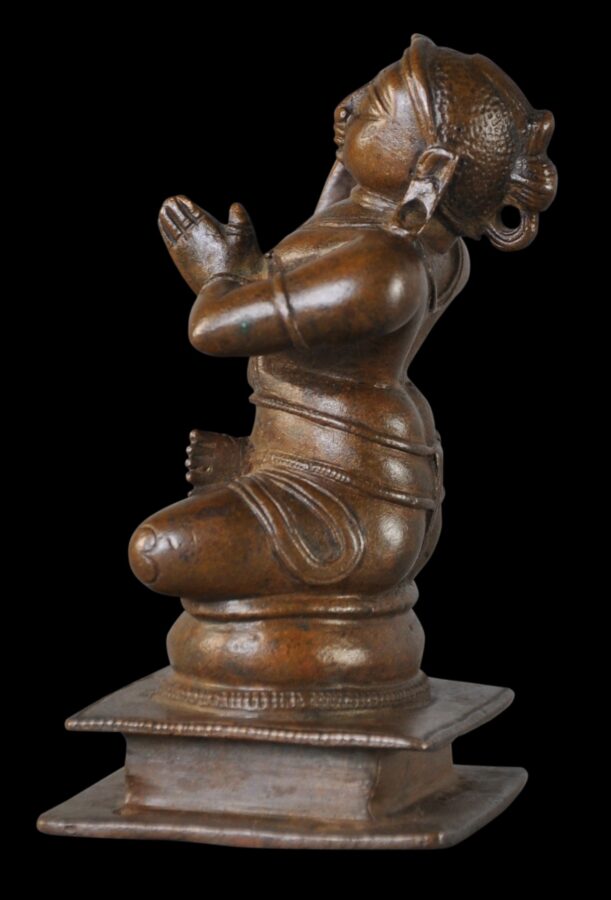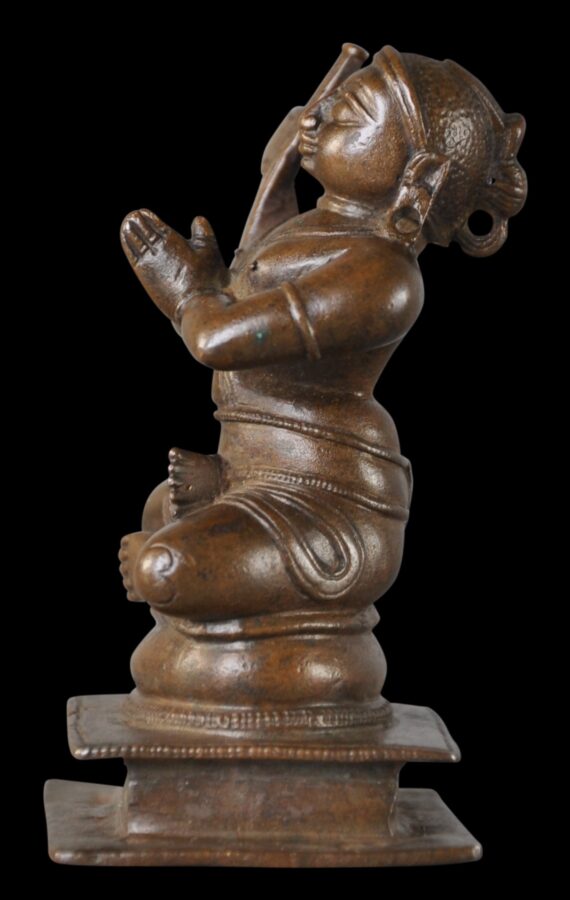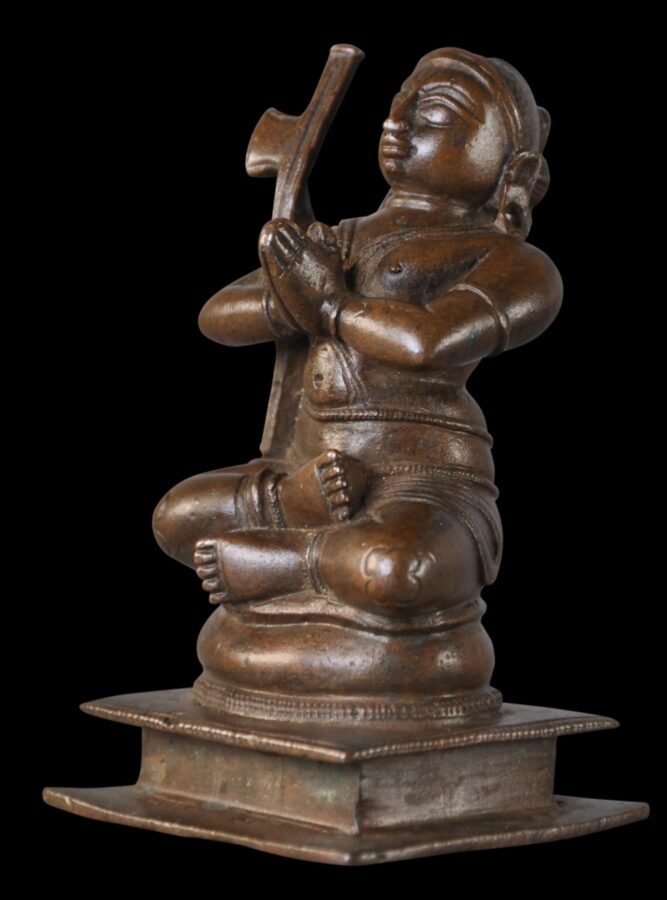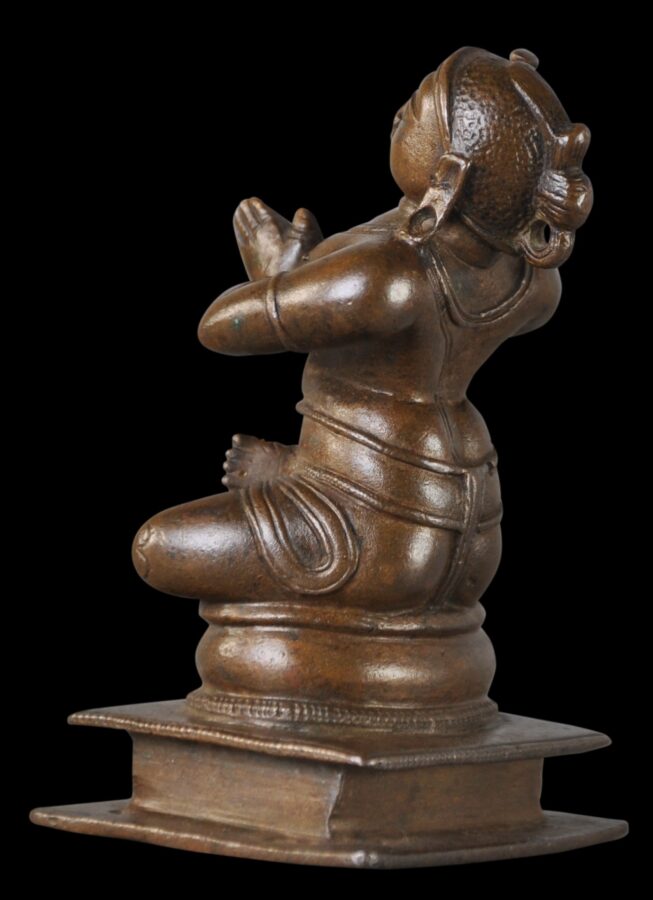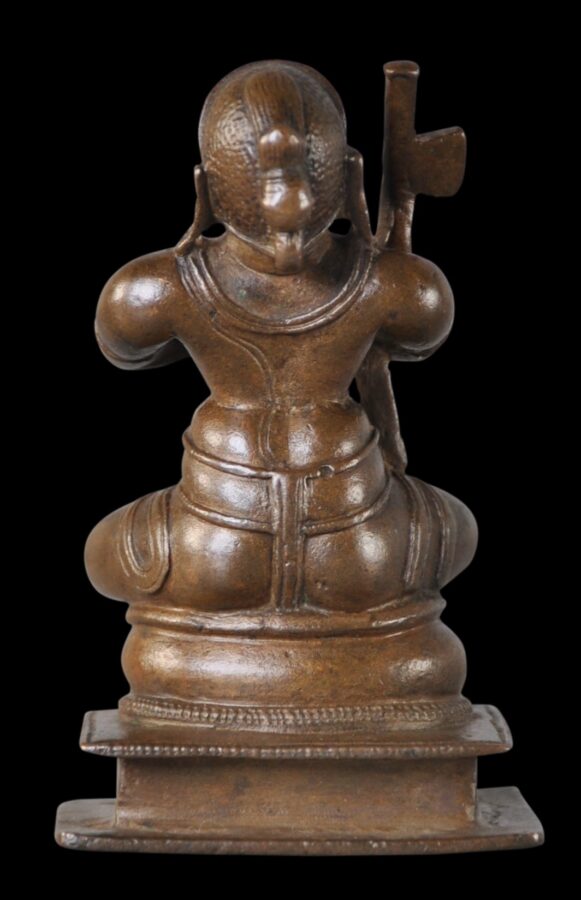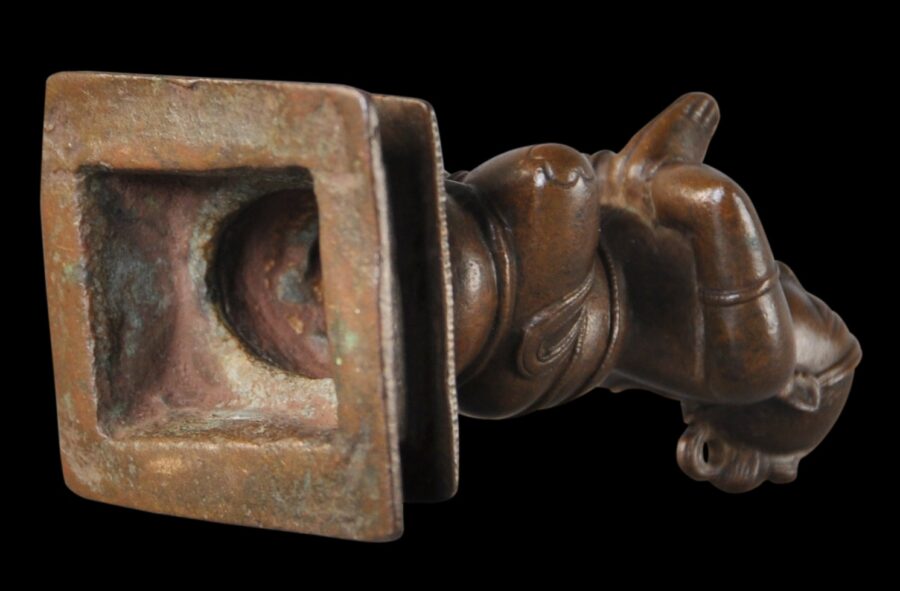This figure shows Ramanujacharya (also known as Ramanuja) and important a 12th century South Indian guru and philosopher.
He is shown seated on a round cushion on a tiered platform, with the legs loosely crossed, the head upright, and the hands in anjali mudra in veneration of his lord Vishnu. A staff with a small banner attached rests inside his folded right arm. (This is also interpreted as an axe, symbolising clarity of mind.) He wears a short waist cloth as befitting a guru, and items of jewellery. He has a pleasing face with large, benevolent, almond-shaped eyes.
Ramanujacharya was and an important exponent of the Sri Vaishnavism tradition within Hinduism. He provided the bhakti movement with sound philosophical underpinnings and developed many rituals for the benefit of devotees.
Ramanujacharya preached across southern India but is most typically associated with Sriringam in Tanjavur district and Melukote in Karnataka.
A related bronze in the Victoria & Albert Museum is illustrated in Guy (2007, p. 102).
The example here is in fine condition, with a good, dark patina.
References
Guy, J., Indian Temple Sculpture, V&A Publications, 2007.


